
Yauco, Puerto Rico
Encyclopedia
Yauco (ˈʝauko) is a city (ciudad) and municipality
in southwestern Puerto Rico
located in the southern coast of the island by the Caribbean, south of Maricao
, Lares
and Adjuntas
; east of Sabana Grande and
Guánica
; and west of Guayanilla
. Yauco is spread over 20 wards and Yauco Pueblo (The urban area and the administrative center of the town). It is both a principal city of the Yauco Metropolitan Statistical Area and the Ponce-Yauco-Coamo Combined Statistical Area.
According to the United States Census Bureau
the population of Yauco in the year 2000 was 46,384 persons and in 2010 it decreased to 42,043 persons, resulting in a net loss of 4,341 people or 9.36%. Its land area is 176.5 square kilometers with a population density of 238.2 per square kilometer. Its postal zip code is 00698, telephone area code is 787, and it is in the Atlantic time zone.
Yauco is also the name of the principal town (zona urbana) of the municipality. The town's population in 2000 was 19,609. The town, built on a hillside, has stepped streets and traditional houses, some of which are open for tours.
Yaucanos also call their home la Ciudad del Café (City of Coffee), la Capital Taína (Taíno Capital), and los Corsos (The Corsicans).
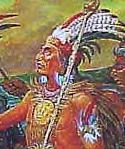
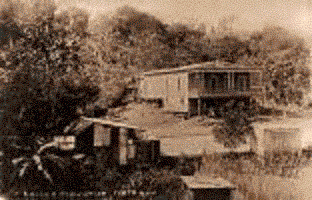

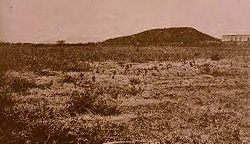
In a silver field a gold and black boiler, with seven necks and heads of black serpents in each handle, three to the right hand, confronted with four to the left-hand side. Bordered by a checkered band in gold and black. The second and third quarter, in a field of gold, two coffee plant flowers of five leaves of silver and four red. The coffee plant flower and the coffee grains, represent their cultivation in the Yauco municipality. The border of the shield represents the beads of the rosary. The three tower crown, establishes its category of town.
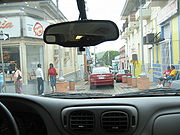
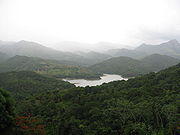
Municipalities of Puerto Rico
The Municipalities of Puerto Rico number 78 and they make up the smallest electoral division of the Commonwealth. Each municipality is divided into barrios, though the latter are not vested with political authority.-Administrative divisions:...
in southwestern Puerto Rico
Puerto Rico
Puerto Rico , officially the Commonwealth of Puerto Rico , is an unincorporated territory of the United States, located in the northeastern Caribbean, east of the Dominican Republic and west of both the United States Virgin Islands and the British Virgin Islands.Puerto Rico comprises an...
located in the southern coast of the island by the Caribbean, south of Maricao
Maricao, Puerto Rico
Maricao is the second-least populous municipality of Puerto Ricolocated at the western edge of the Cordillera Central. It is a small town set around a small plaza in hilly terrain, north of San Germán, Saban Grande and Yauco; south of Las Marías and Lares, southeast of Mayagüez, and west of Adjuntas...
, Lares
Lares, Puerto Rico
Lares is a small mountain municipality of Puerto Rico's central-western area located north of Maricao and Yauco; south of Camuy, east of San Sebastián and Las Marias; and west of Hatillo, Utuado and Adjuntas. Lares is spread over 10 wards and Lares Pueblo...
and Adjuntas
Adjuntas, Puerto Rico
Adjuntas is a small mountainside municipality in Puerto Rico located central midwest of the island on the Central Mountain range , north of Yauco, Guayanilla and Peñuelas; southeast of Utuado; east of Lares and Yauco; and west of Ponce. Adjuntas is spread over 16 wards and Adjuntas Pueblo...
; east of Sabana Grande and
Sabana Grande, Puerto Rico
Sabana Grande is a municipality of Puerto Rico located north of Lajas and Guánica; south of Maricao; east of San Germán; and west of Yauco. Sabana Grande is spread over seven wards and Sabana Grande Pueblo...
Guánica
Guánica, Puerto Rico
Guánica is a municipality in southwestern Puerto Rico located on southern coast, bordering the Caribbean Sea, south of Sabana Grande, east of Lajas, and west of Yauco. It is part of the Yauco Metropolitan Statistical Area....
; and west of Guayanilla
Guayanilla, Puerto Rico
Guayanilla is a municipality of Puerto Rico located in southern coast of the island, bordering the Caribbean Sea, south of Adjuntas, east of Yauco; and west of Peñuelas and about 12 miles west of Ponce. Guayanilla is spread over 16 wards and Guayanilla Pueblo...
. Yauco is spread over 20 wards and Yauco Pueblo (The urban area and the administrative center of the town). It is both a principal city of the Yauco Metropolitan Statistical Area and the Ponce-Yauco-Coamo Combined Statistical Area.
According to the United States Census Bureau
United States Census Bureau
The United States Census Bureau is the government agency that is responsible for the United States Census. It also gathers other national demographic and economic data...
the population of Yauco in the year 2000 was 46,384 persons and in 2010 it decreased to 42,043 persons, resulting in a net loss of 4,341 people or 9.36%. Its land area is 176.5 square kilometers with a population density of 238.2 per square kilometer. Its postal zip code is 00698, telephone area code is 787, and it is in the Atlantic time zone.
Yauco is also the name of the principal town (zona urbana) of the municipality. The town's population in 2000 was 19,609. The town, built on a hillside, has stepped streets and traditional houses, some of which are open for tours.
Yaucanos also call their home la Ciudad del Café (City of Coffee), la Capital Taína (Taíno Capital), and los Corsos (The Corsicans).
History and important historical events
The city of Yauco was named after the river Yauco which was originally known as coayuco by the Taínos, meaning "yucca plantation".
- The area of Yauco was considered as the capital of "Boriken" (Taíno name of Puerto Rico) and was governed by Agüeybana, the most powerful Taíno "cacique" (chief) in the island. All the other Caciques were subject to and had to obey Agüeybaná, even though they governed their own tribes. Upon Agüeybaná's death in 1510, his nephew, Güeybaná (also known as Agüeybaná II), became the most powerful Cacique in the island. Agüeybaná II had his doubts about the "godly" status of the Spaniards. He came up with a plan to test these doubts; he and UrayoánUrayoánUrayoán was a Taíno "Cacique" famous for ordering the drowning of Diego Salcedo to determine if the Spanish were gods.He was the cacique of "Yucayeque del Yagüeka or Yagueca", a region that presently spans between Añasco and Mayagüez, Puerto Rico. In 1511, Urayoán and Agüeybaná II conceived a...
(cacique of AñascoAñasco, Puerto RicoAñasco , named after one of its settlers, Don Luis de Añasco, is a municipality of Puerto Rico located on the west coast of the island bordering the Mona Passage to the west, north of Mayagüez, and Las Marias; south of Rincón, Aguada, and Moca and west of San Sebastián and Las Marias...
) sent some of their tribe members to lure a Spaniard by the name of Diego SalcedoDiego Salcedo (soldier)Diego Salcedo was a Spanish conquistador who allegedly lived during the colonization of the Americas. According to legend, his death at the hands of Taíno Indians ignited the Taíno rebellion of 1511....
into a river and drown him. They watched over Salcedo's body to make sure that he would not resuscitate. Salcedo's death was enough to convince him and the rest of the Taíno people that the Spaniards were not gods. This in turn led to the failed Taíno rebellion of 1511.
- In 1755, the Spanish settlers of the region built a small chapel and named it "Nuestra Señora del Santísimo Rosario" (Our Lady of the Rosary). The settlers sent Fernando Pacheco as their representative to the Spanish Government, to request the establishment of a municipality, since one of the requisites to such a request, the establishment of a place of worship, had been met. On February 29, 1755, the King of Spain granted the settlers their request and the town of Yauco was established. Fernando Pacheco was named First Lieutenant of War of the new town.

- The island of Puerto Rico is very similar in geography to the island of Corsica and therefore appealed to the many Corsicans who wanted to start a "new" life. Under the Spanish Royal Decree of GracesRoyal Decree of Graces of 1815The Royal Decree of Graces of 1815 is a legal order approved by the Spanish Crown in the early half of the 19th century to encourage Spaniards and later Europeans of non-Spanish origin to settle and populate the colonies of Cuba and Puerto Rico....
, the Corsicans and other immigrants were granted land and initially given a "Letter of Domicile" after swearing loyalty to the Spanish Crown and allegiance to the Catholic Church. After five years they could request a "Letter of Naturalization" that would make them Spanish subjects. Hundreds of Corsicans and their families immigrated to Puerto Rico from as early as 1830, and their numbers peaked in the 1850s. The first Spanish settlers settled and owned the land in the coastal areas, the Corsicans tended to settle the mountainous southwestern region of the island, primary in the towns of Adjuntas, LaresLares, Puerto RicoLares is a small mountain municipality of Puerto Rico's central-western area located north of Maricao and Yauco; south of Camuy, east of San Sebastián and Las Marias; and west of Hatillo, Utuado and Adjuntas. Lares is spread over 10 wards and Lares Pueblo...
, UtuadoUtuado, Puerto RicoUtuado is a municipality of Puerto Rico located in the central-western mountainous region of the island known as La Cordillera Central. It is located north of Adjuntas and Ponce; south of Hatillo and Arecibo; east of Lares; and west of Ciales and Jayuya. In land area it is the third-largest...
, Ponce, CoamoCoamo, Puerto RicoCoamo is a municipality in Puerto Rico located in the southern region, north of Santa Isabel; south of Orocovis and Barranquitas; east of Villalba and Juana Díaz; and west of Aibonito and Salinas. Coamo is spread over 10 wards and Coamo Pueblo...
, Yauco, GuayanillaGuayanilla, Puerto RicoGuayanilla is a municipality of Puerto Rico located in southern coast of the island, bordering the Caribbean Sea, south of Adjuntas, east of Yauco; and west of Peñuelas and about 12 miles west of Ponce. Guayanilla is spread over 16 wards and Guayanilla Pueblo...
and GuánicaGuánica, Puerto RicoGuánica is a municipality in southwestern Puerto Rico located on southern coast, bordering the Caribbean Sea, south of Sabana Grande, east of Lajas, and west of Yauco. It is part of the Yauco Metropolitan Statistical Area....
. However, it was Yauco whose rich agricultural area attracted the majority of the Corsican settlers. The three main crops in Yauco were coffeeCoffeeCoffee is a brewed beverage with a dark,init brooo acidic flavor prepared from the roasted seeds of the coffee plant, colloquially called coffee beans. The beans are found in coffee cherries, which grow on trees cultivated in over 70 countries, primarily in equatorial Latin America, Southeast Asia,...
, sugar cane and tobaccoTobaccoTobacco is an agricultural product processed from the leaves of plants in the genus Nicotiana. It can be consumed, used as a pesticide and, in the form of nicotine tartrate, used in some medicines...
. The new settlers dedicated themselves to the cultivation of these crops and within a short period of time some were even able to own and operate their own grocery stores. However, it was with the cultivation of the coffee bean that they would make their fortunes. Cultivation of coffee in Yauco originally began in the Rancheras and Diego Hernández sectors and later extended to the Aguas Blancas, Frailes and Rubias sectors. The Mariani family created a machine out of a cotton ginCotton ginA cotton gin is a machine that quickly and easily separates cotton fibers from their seeds, a job formerly performed painstakingly by hand...
in the 1860s, which was used in the dehusking of coffee. This represented a significant improvement in Puerto Rico's coffee appearance and an opportunity to stand out in the international coffee market. By the 1860s the Corsican settlers were the leaders of the coffee industry in Puerto Rico and seven out of ten coffee plantations were owned by Corsicans.

- The second and last major revolt against Spanish colonial rule in Puerto Rico, by Puerto Rico's pro-independence movement, known as the Intentona de YaucoIntentona de YaucoThe Intentona de Yauco a.k.a. the "Attempted Coup of Yauco" of 1897, was the second and last major revolt against Spanish colonial rule in Puerto Rico, staged by Puerto Rico's pro-independence movement....
a.k.a. the "Attempted Coup of Yauco", was staged in Yauco. The revolt, which occurred on of March 26, 1897, was organized by Antonio Mattei LluberasAntonio Mattei LluberasAntonio Mattei Lluberas , was a businessman and politician who in 1897 planned and led the second and last major uprising against Spanish colonial rule in Puerto Rico, known as the Intentona de Yauco.-Early years:...
, Meteo Mercado and Fidel Velz and was backed up by leaders of "El Grito de Lares", the first major independence attempt, who were in exile in New York City as members of the Puerto Rican Revolutionary Committee. It was during this uprising that Fidel Velz unfurled the current flag of Puerto RicoFlag of Puerto RicoThe flags of Puerto Rico represent and symbolize the island and people of Puerto Rico. The most commonly used flags of Puerto Rico are the current flag, which represents the people of the commonwealth of Puerto Rico; municipal flags, which represent the different regions of the island; political...
on Puerto Rican soil for the first time. Rumors of the planned event spread to the local Spanish authorities who acted swiftly and put an end to what would be the last major uprising in the island to Spanish colonial rule.

- In 1898, upon the outbreak of the Spanish-American WarSpanish-American WarThe Spanish–American War was a conflict in 1898 between Spain and the United States, effectively the result of American intervention in the ongoing Cuban War of Independence...
, Guánica was a small barrioBarrioBarrio is a Spanish word meaning district or neighborhood.-Usage:In its formal usage in English, barrios are generally considered cohesive places, sharing, for example, a church and traditions such as feast days...
within the jurisdiction of the town of Yauco. It had 60 houses in all and its only defense was eleven members of the 4th Volante de Yauco, a Puerto Rican militia unit, under the command of Lieutenant Enrique Méndez López. When the convoy with General Nelson Miles, approached the barion, Guánica lighthouseGuánica LightGuánica Light was a historic lighthouse located in the town of Guánica, Puerto Rico in the Guánica State Forest. It was first lit in 1893 and deactivated on 1950...
keeper Robustiano Rivera immediately gave the alert to the residents of the barrio. All of the residents, with the exception Agustín Barrenechea, Vicente Ferrer, Juan María Morciglio, Simón Mejil, Salvador Muñoz, Cornelio Serrano and Pascual Elena who welcomed the invaders, abandoned their homes and joined Rivera on his journey to Yauco where he broke the news of the invading forces to the city's mayor. The first skirmish between Spanish/Puerto Rican and American armed forces was fought in that barrio between the Puerto Rican militia and twenty-eight sailors and MarinesUnited States Marine CorpsThe United States Marine Corps is a branch of the United States Armed Forces responsible for providing power projection from the sea, using the mobility of the United States Navy to deliver combined-arms task forces rapidly. It is one of seven uniformed services of the United States...
, under the command of Lieutenants H. P. Huse and Wood, departed from the SS Gloucester on rafts and landed on the beach, occurred when Lt. Méndez López and his men attacked and opened fire on the Americans. During the small battle which followed, the Americans returned fire with their machine gun and the Gloucester began to bombard the Spanish position. Lt. Méndez López and three of his men were wounded and the militia unit was forced to retreat to the town of Yauco. Yauco was also the place where the first major land battle between Spanish/Puerto Rican and American armed forces was fought in Puerto Rico during the war. On July 26, 1898, Spanish forces and Puerto Rican volunteers, led by Captain Salvador Meca and Lieutenant Colonel Francisco Puig fought against the American forces led by Brigadier General George A. Garretson. The Spanish forces engaged the 6th Massachusetts in a firefight at the Hacienda Desideria, owned by Antonio Mariani, in what became known as the Battle of Yauco of the Puerto Rico Campaign. Puig and his forces suffered 2 officers and 3 soldiers wounded and 2 soldiers dead. The Spanish forces were ordered to retreat.
Flag
The flag of Yauco consists of two horizontal stripes of equal width, black the superior and gold the inferior one. To the center the official shield of Yauco.Coat of Arms
Shield divided in quarters by a cross in the center that represents the Christendom.In a silver field a gold and black boiler, with seven necks and heads of black serpents in each handle, three to the right hand, confronted with four to the left-hand side. Bordered by a checkered band in gold and black. The second and third quarter, in a field of gold, two coffee plant flowers of five leaves of silver and four red. The coffee plant flower and the coffee grains, represent their cultivation in the Yauco municipality. The border of the shield represents the beads of the rosary. The three tower crown, establishes its category of town.
Barrios (Districts/Wards)
Population (census 2010): 50,258

- Aguas Blancas
- Algarrobo
- Almácigo Alto
- Almácigo Bajo
- Barinas
- Caimito
- Collores
- Diego Hernandez
- Duey
- Frailes
- Jácana
- Naranjo
- Palomas
- Quebradas
- Ranchera
- Río Prieto
- Rubias
- Sierra Alta
- Susúa Alta
- Susúa Baja
- Vegas
- Yauco Pueblo
Geo/Topography
- Mount Membrillo, the Rodadero Peak and the Curet Hill.
- Rivers; Río ChiquitoRío Chiquito (Yauco, Puerto Rico)-See also:*List of rivers of Puerto Rico-References:*USGS Hydrologic Unit Map – Caribbean Region *...
, Duey LocoRío Duey (Yauco, Puerto Rico)-See also:*List of rivers of Puerto Rico-References:*USGS Hydrologic Unit Map – Caribbean Region *...
, Río NaranjoRío Naranjo-See also:*List of rivers of Puerto Rico-References:*USGS Hydrologic Unit Map – Caribbean Region *...
and Río YaucoRío Yauco-See also:*List of rivers of Puerto Rico-References:*USGS Hydrologic Unit Map – Caribbean Region *...
.
Agriculture
Yauco's main crops are coffee, plantains, oranges and tobacco. Yauco coffees are a revived specialty origin that, at best, display the qualities that made Jamaica Blue Mountain famous: A deep, vibrant, yet restrained acidity and balanced, gently rich flavor. However, this potentially finest of Caribbean coffees is often marred by inconsistency.Landmarks and places of interest
- Mansión Negroni
- Casa Franceschi
- Casa Agre
- Casa Cesari
- Iglesia Católica Nuestra Señora del Rosario
- Lucchetti LakeAntonio S. LuchettiAntonio S. Luchetti was a Puerto Rican engineer and dedicated public servant, through whom comprehensive electric service was established in Puerto Rico via the Puerto Rico Water Resources Authority and, later, via the public electric company, Fuentes Fluviales.Luchetti was instrumental in...
- Nuestra Señora del Rosario Hermitage Ruins
- Plaza Fernando Pacheco
- Teatro Ideal
- Tozza Castle
- Vega Lake
- Colegio Santísimo Rosario (Holy Rosary School)
- Yauco Urban Park
Festivals and events
- Festival Nacional del Café - February
- Fiestas Patronales en honor a la Patrona del Pueblo, Nuestra Señora del Rosario (Our Lady of the Rosary, Patroness) - October
- Festival Internacional de las Culturas - December
Notable people
The following is a list of some of Yauco's most distinguished natives.- Agostini Bonelli, Amelia (1896–1996) – anthologist, poet, educator, professor in Columbia University
- Filardi, Carmelo - Artist, author
- Filomón Matos Ramos (1915–2008)- Merchant
- Franquiz, José A. (1906–1967) – poet
- Gilormini, Mihiel "Mike"Mihiel GilorminiBrigadier General Mihiel "Mike" Gilormini , was a United States Air Force officer who served in the Royal Air Force and in the United States Army Air Force during World War II. He was the recipient of the Silver Star, the Air Medal with four clusters and the Distinguished Flying Cross 5 times...
(1918–1988) – World War II hero and co-founder of the Puerto Rico Air National Guard. Retired as Brigadier General in the Air National Guard. - Giovannetti, Jose Antonio – educator, poet
- Llorens Mattei, Johnny (1992- )- Radio Personality
- Llorens Mattei, John Paul (1995- ) - Radio Personality
- Dr. Martínez Maldonado, ManuelManuel Martínez MaldonadoDr. Manuel Martínez Maldonado , MD; MACP, is a Nephrologist, educator, poet and author. He discovered a natriuretic hormone and has authored numerous scientific publications. His research interests are the regulation of blood pressure and the effect of high blood pressure on the kidneys...
- Discovered a natriuretic hormone and has authored numerous scientific publications. - Mariani, Pedro Domingo (1880–1925) – poet, journalist
- Mariani-Ortiz, Lydia – educator, PR rights activist
- Masini-Molini, José Antonio "El Corso" (1913–1987) – Agronomist. Director, Land Authority of P.R. (1969–1972) – Director, Sugar Corporation of P.R. (1977–1984)
- Mattei, Andrés (1863–1925) – poet, journalist
- Mattei Lluberas, AntonioAntonio Mattei LluberasAntonio Mattei Lluberas , was a businessman and politician who in 1897 planned and led the second and last major uprising against Spanish colonial rule in Puerto Rico, known as the Intentona de Yauco.-Early years:...
(1857–1908) - Leader of the Intentona de YaucoIntentona de YaucoThe Intentona de Yauco a.k.a. the "Attempted Coup of Yauco" of 1897, was the second and last major revolt against Spanish colonial rule in Puerto Rico, staged by Puerto Rico's pro-independence movement....
revolt of 1897 and Mayor of Yauco from 1904 to 1906 - Mignucci Calder, Carlos Armando (1889–1954) – politician, Mayor of Yauco (1944–52), Member of Puerto Rico's Constitutional Assembly (1952)
- Negroni, Héctor AndrésHector Andres NegroniColonel Héctor Andrés Negroni is a historian, senior aerospace defense executive, author and the first Puerto Rican graduate of the United States Air Force Academy...
– First Puerto Rican graduate of the US Air Force Academy, US Air Force Colonel, Fighter Pilot, Senior Aerospace Executive and Historian - Negroni Arizmendi, Julio Alberto – Electrical Engineer who served as the First President for the Water Works Authority in Puerto Rico.
- Negroni Nigaglioni, Santiago – journalist, educator poet, Founder and first President of Puerto Rico Teachers Association.
- Negroni Lucca, Andrés de los Santos (1851–1920) – Puerto Rican patriot and one of the 16 prisoners in El Morro Castle in 1887.
- Negroni Mattei, Francisco (1897–1939) – poet, journalist
- Olivari Santoni, Tomás (1902–1904) – Architect and Mayor of Yauco
- Olivieri Rodríguez, Ulises – poet, journalist
- Rojas Tollinchi, FranciscoFrancisco Rojas TollinchiFrancisco Rojas Tollinchi , was a Puerto Rican poet, civic leader and journalist.-Early years:Rojas Tollinchi was one of five siblings born to Pedro Rojas Perez and Flora Maria Tollinchi Battistini in the barrio Algarrobos in Yauco, Puerto Rico...
, poet, civic leader and journalist. - Semidei Rodríguez, JoséJosé Semidei RodríguezBrigadier General José Semidei Rodríguez . Before becoming a Brigadier General in the Cuban National Army,...
- Brigadier General in the Cuban Liberation Army. Semidei Rodríguez fought in Cuba's War of IndependenceCuban War of IndependenceCuban War of Independence was the last of three liberation wars that Cuba fought against Spain, the other two being the Ten Years' War and the Little War...
(1895–1898) and after Cuba gained it's independence he continued to serve in that country as diplomat. - Torres Aguilo, Bernardo - Merchant, Farmer of the Year several times.
See also
- Corsican immigration to Puerto RicoCorsican immigration to Puerto RicoCorsican immigration to Puerto Rico came about as a result of various economic and political changes in the mid-19th century Europe; among those factors were the social-economic changes which came about in Europe as a result of the Second Industrial Revolution, political discontent and widespread...
- Battle of Yauco
- Intentona de YaucoIntentona de YaucoThe Intentona de Yauco a.k.a. the "Attempted Coup of Yauco" of 1897, was the second and last major revolt against Spanish colonial rule in Puerto Rico, staged by Puerto Rico's pro-independence movement....

